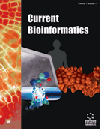
Full text loading...
We use cookies to track usage and preferences.I Understand

Disease is a major threat to life, and extensive efforts have been made over the past centuries to develop effective treatments. Identifying drug-disease and disease-target associations is crucial for therapeutic advancements, whereas drug-target associations facilitate the design of more effective treatment strategies. However, traditional experimental approaches for identifying these associations are costly and time-consuming. Numerous computational models have been developed to predict drug-target, drug-disease, and disease-target associations. However, these models are designed individually and cannot directly predict drug-target-disease associations, which involve interconnections among drugs, targets, and diseases. Such triple associations provide deeper insights into disease mechanisms and therapeutic interventions by capturing high-order associations.
This study proposes a computational model named PDTDAHN to predict drug-target-disease triple associations.
Six association types retrieved from public databases are used to construct a heterogeneous network comprising drugs, targets, and diseases. The network embedding algorithm Mashup is applied to extract features for drugs, targets, and diseases, which are then combined to represent each drug-target-disease association. The classification model is trained using LightGBM.
Cross-validation on eight datasets demonstrates the high performance of PDTDAHN, with AUROC and AUPR exceeding 0.9. This model outperforms previous models based on pairwise association predictions.
The proposed model effectively predicts drug-target-disease triple associations.

Article metrics loading...

Full text loading...
References


Data & Media loading...